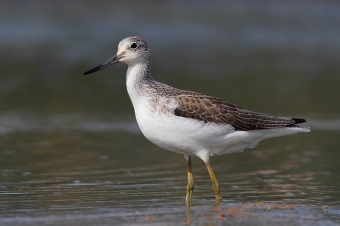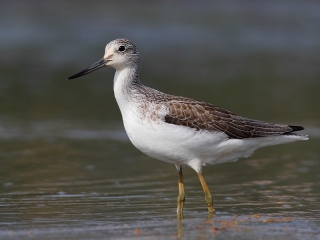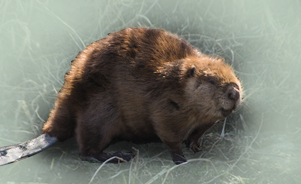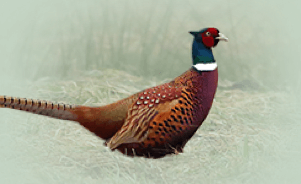Common greenshank Tringa nebularia

Features
The common greenshank is recognisable by its long green beak and green legs. Quite often it can be observed on coastal shallows, wading in shallow water and collecting smaller invertebrates from the surface or running for smaller fish with an open beak.
| Species | Bird |
| Living space | Lake, Rivers, Shore, Swamp |
| Size | 30 - 34 cm |
| Weight | 190 g |
Description
The common greenshank measures from 30 to 34 cm in length, and has a wingspan measuring from 55 to 62 cm. It is recognisable by its long green legs and a long, relatively robust and slightly upward curved beak. The legs of young specimens and birds in winter feathers are more dull, greyish-green. The base of the beak is also grey and its tip is black. The upper part – the back and the wings – is grey. The chicks are darker above, with light-coloured feathers, which form a streak pattern; on their chest they are evenly streaked, and their stomach is white. In their winter feathers, adults are lightgrey above, their chest is greyish, with no distinctive pattern, while in the summer they are more contrastingly coloured. The common greenshank is predominantly a carnivorous bird, which eats during the day and at night. The bulk of its diet consists of insects, especially beetles and their larvae, as well as annelids (earthworms and leeches) and crustaceans. It is a very fast bird, which can often be seen in the shallow water catching small fish. From the end of April to July, individual couples mainly nest in pine forests, which grow along wetlands, marshes, lakes or rivers in the north of Europe. One of the parents, usually the female, heads to the wintering grounds in early July, and the rest of the family follow in a month. They spend their winters in southern Africa or Australia where they stay in the vicinity of the water; near swamps and lakes in the interior or lagoons, mangroves and near river deltas by the sea. In Slovenia, the common greenshanks can often be observed when they are resting from the long migration flight. Usually they rest in shallow standing waters and wet meadows as they wait for more favourable conditions to continue their migration.Common greenshank
on the habitat Temenica
It can be spotted from April to October, and in winter it moves to the south of Africa.

Features Temenica (3)
SPECIAL ogr.




